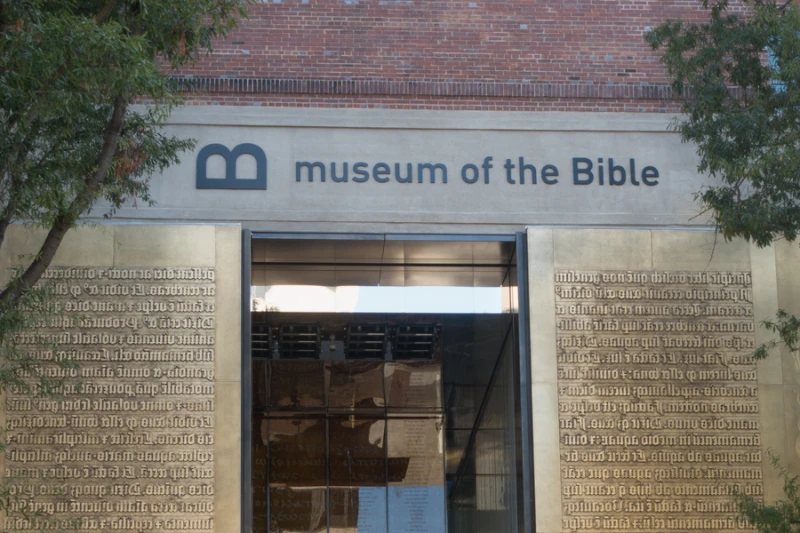
Washington D.C., Jan 27, 2022 / 14:54 pm (CNA).
The Museum of the Bible will be opening a new exhibit dedicated to the Shroud of Turin next month.
“Mystery & Faith: The Shroud of Turin” will open to the public Feb. 26, and run until July 31. Admission is included with Museum of the Bible admission. The museum is located in Washington, D.C.
The Shroud of Turin is an artifact that many believe to be the burial shroud of Christ. It is a 14-by-three-foot long piece of cloth stained with the image of a deceased man who had been tortured and crucified. The actual Shroud of Turin is stored in Turin, Italy.
“One of the things we’ll do in the exhibit is to highlight the Gospel stories and show how the shroud reflects that, and how it’s depicted in the cloth, reflected in the cloth,” Jeffrey Kloha, Ph.D, the museum’s chief curatorial officer, said in a video posted on the Museum of the Bible’s website.
“It really gives us a great opportunity to allow people who might just have a surface knowledge to want to come and dig deeper,” he added.
The exhibit will feature five exhibit sections and “eight cutting-edge interactives” to teach visitors “about how the Shroud mirrors the Gospels, its history, and its impact on millions of people.”
Brian Hyland, a curator at the Museum of the Bible, said that one of the interactive stations will feature a recreation of the Shroud of Turin. Visitors will be able to wave their hands over parts of the shroud, which will trigger an audio explanation of how that specific part of the shroud is connected to the Gospel account of the crucifixion.
“It mirrors the Gospels in the way that the pattern, the wounds on the shroud, match so closely to the Gospels,” said Hyland. “And that ties in to our mission at Museum of the Bible, of telling stories of the Bible.”
To celebrate the opening of the exhibit, the Museum of the Bible is hosting a “grand opening celebration” on Feb. 26, featuring presentations from four experts on the Shroud of Turin: Russ Breault, Barrie Schwortz, Fr. Robert Spitzer, and Dr. Cheryl White.
EWTN, the parent company of Catholic News Agency, is one of the event’s sponsors.
Spitzer, a Jesuit priest, is the host of “Father Spitzer’s Universe” on EWTN, as well as the founder and president of the Magis Institute of Reason of Faith and the the Spitzer Center of Ethical Leadership.
White is a professor of history at Louisiana State University at Shreveport, and is a member of the American Confraternity of the Holy Shroud, serves on the board of the Shroud of Turin Research and Education Association, and is the co-host of the podcast “Who Is the Man of the Shroud?”
Breault is the president and founder of the Shroud of Turin Education Project Inc., and has been researching the Shroud of Turin for over three decades.
Schwortz, a retired technical photographer and scientist, was a member of the 1978 Shroud of Turin Research Project. At the time, he described himself as a non-practicing Jew. In a 2015 profile by Catholic News Agency, Schwortz said that the “science that convinced me” that the Shroud was not an ordinary artifact.
“I think I serve God better this way, in my involvement in the Shroud, by being the last person in the world people would expect to be lecturing on what is, effectively, the ultimate Christian relic,” he told CNA in 2015.
“I think God in his infinite wisdom knew better than I did, and he put me there for a reason.”
The Museum of the Bible was opened in 2017 and claims to be the “world’s largest museum dedicated to the Bible.” Its founder Steve Green, who is also the president of the craft chain Hobby Lobby.
When the museum was under construction in 2015, Green touted that the museum’s collection of Biblical items was one of the largest private collections in the world. Many of those items have since been revealed to be forgeries.
In 2017, the Department of Justice filed a civil forfeiture complaint and a stipulation of settlement, in which Hobby Lobby agreed to return approximately 3,500 artifacts to Iraq.
Green had made the purchase of more than 5,500 cuneiform tablets and other artifacts in 2010 after a trip to the United Arab Emirates, despite warnings from experts that some of the items were likely stolen from archeological sites in Iraq.
Most of the artifacts were shipped into the U.S. by foreign antiquities dealers who made false statements on shipping labels and gave fake provenances and invoices, according to the DOJ.
If you value the news and views Catholic World Report provides, please consider donating to support our efforts. Your contribution will help us continue to make CWR available to all readers worldwide for free, without a subscription. Thank you for your generosity!
Click here for more information on donating to CWR. Click here to sign up for our newsletter.




Leave a Reply